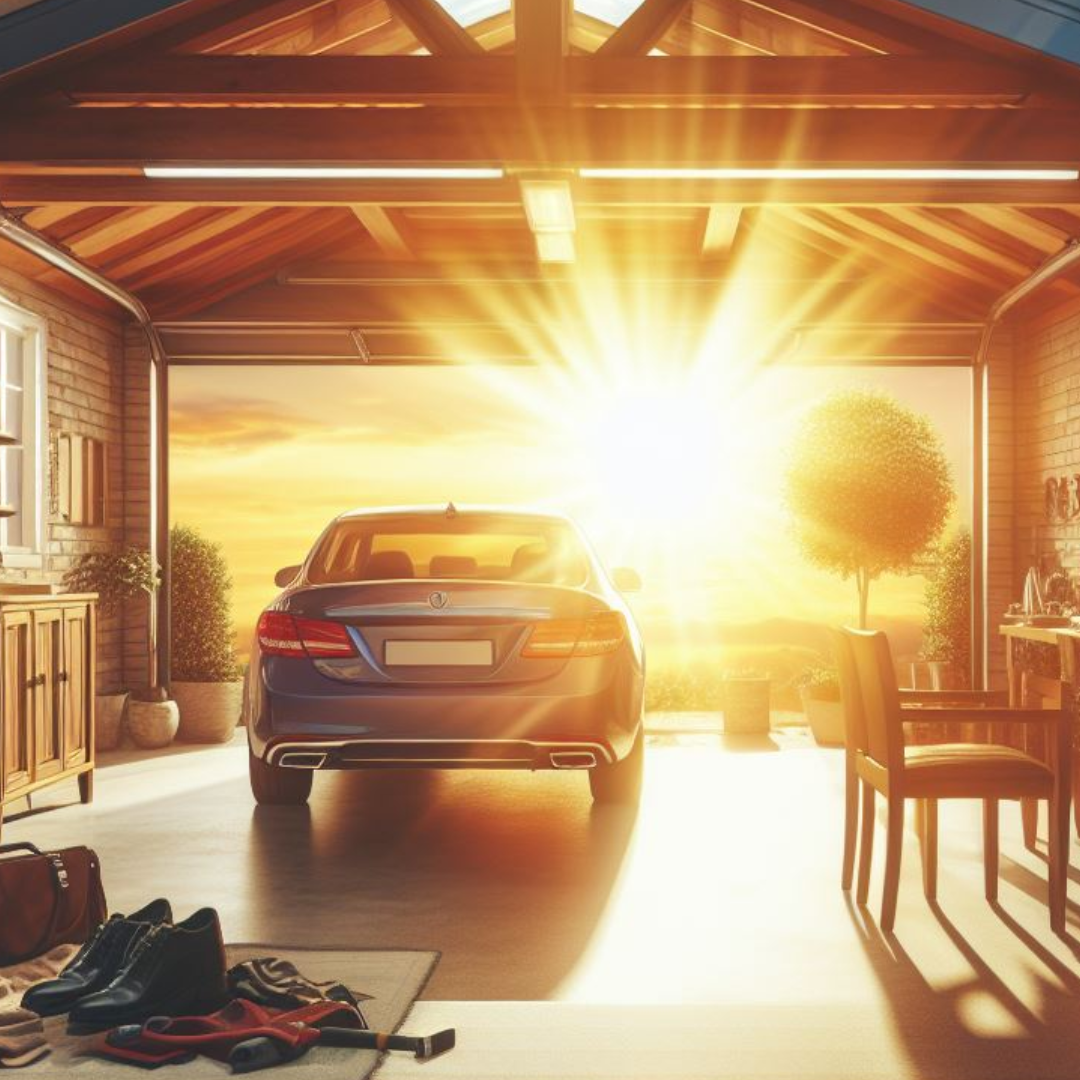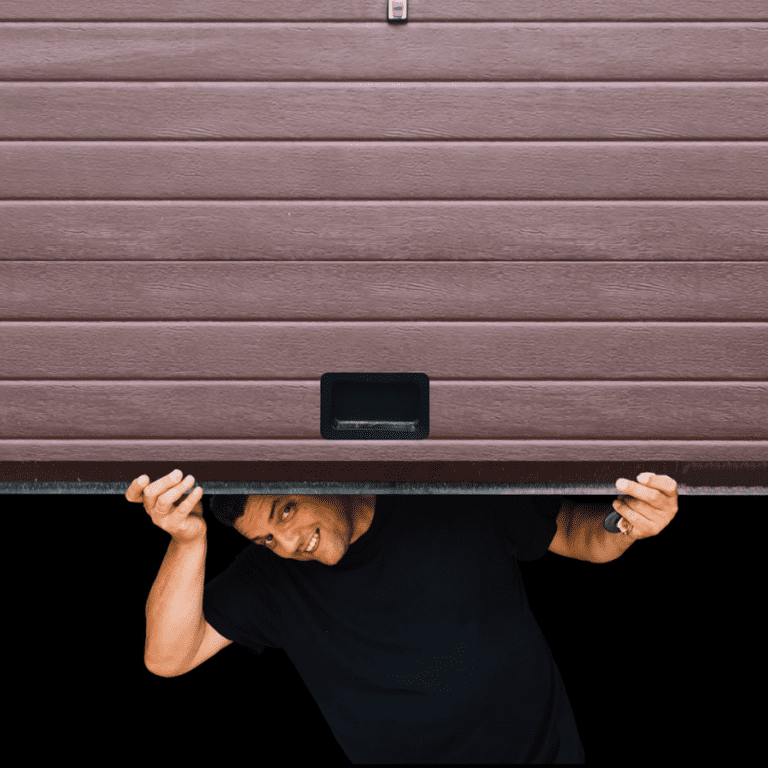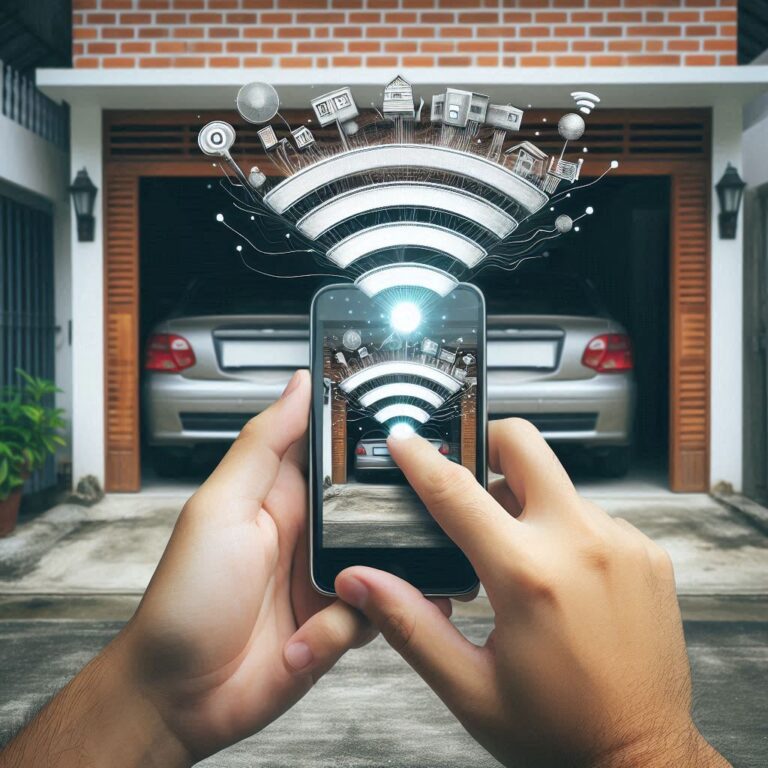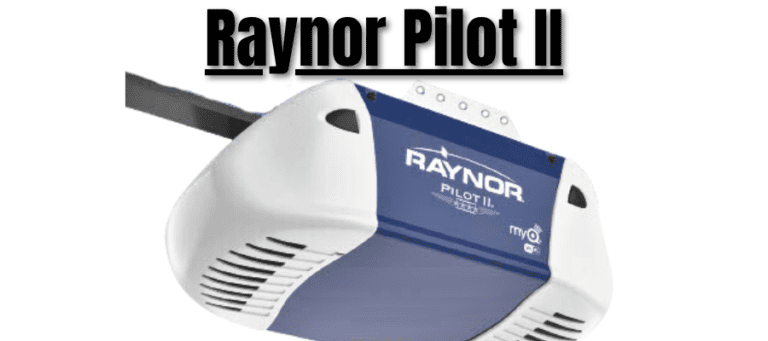Blinded by the Light: Your Garage Door Won’t Close & It Could Be the Sun’s Fault (and how to fix it)
When your garage door won’t close one of the seldom talked about causes is sunlight. Sunlight interfering with your garage door sensors can be frustrating. A garage door safety eye sun shield is a simple fix to this common problem. Discover how to effectively shield your sensors from the sun’s glare and ensure your garage door closes reliably, no matter the weather, in this comprehensive guide.
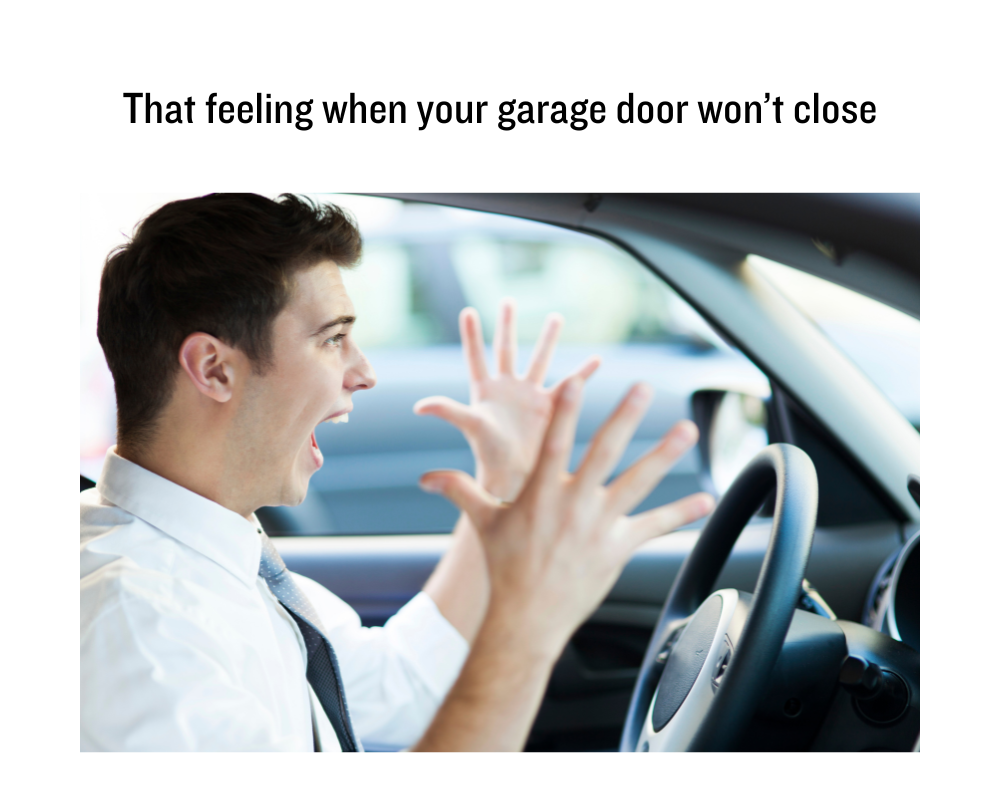
Key Takeaways
- Direct sunlight messes with garage door sensors, making them think there’s something in the way when there’s not. This interference makes it so your garage door won’t close.
- No need to be MacGyver, but a simple DIY fix like a toilet paper tube, or a store-bought sun shield, can save the day and keep your garage door closing right.
- Prevention is the name of the game. Regular sensor check-ups and strategic placement or landscaping can beat the sun at its own game.
The Problem When the Garage Door Won’t Close – Sunlight and Garage Door Sensors
One of the most irritating problems to happen is when you’re rushing out of the house, you press the button to close the garage door and the garage door won’t close. The garage door sensors are the first line of defense when it comes to garage door openers and safety. When the safety sensors are working, they ensure the garage door safely closes as it should. But what happens when these sensors are blinded by a blast of sunlight? Chaos can ensue, and our garage doors get caught in the crossfire.

The truth is, direct sunlight can wreak havoc on garage door sensors, causing them to malfunction and, ultimately, preventing the garage door from closing properly. The sun’s rays are not just light to us; they’re a cocktail of infrared chaos that can confuse the very sensors designed to protect us. This phenomenon typically will happen in the later fall months and early months of spring when the sun is lower in the sky.
How Garage Door Sensors Work
Stationed like sentinels on either side of your garage door, safety reversing sensors are the unsung heroes of the garage door ecosystem. These vigilant warriors communicate with an invisible infrared beam, a secret handshake of sorts, that says “all clear” or “halt, there’s an intruder” to the garage door opener. With an emitter and receiver posted like guards at a castle gate, the sensors ensure nothing gets caught in the door’s path.
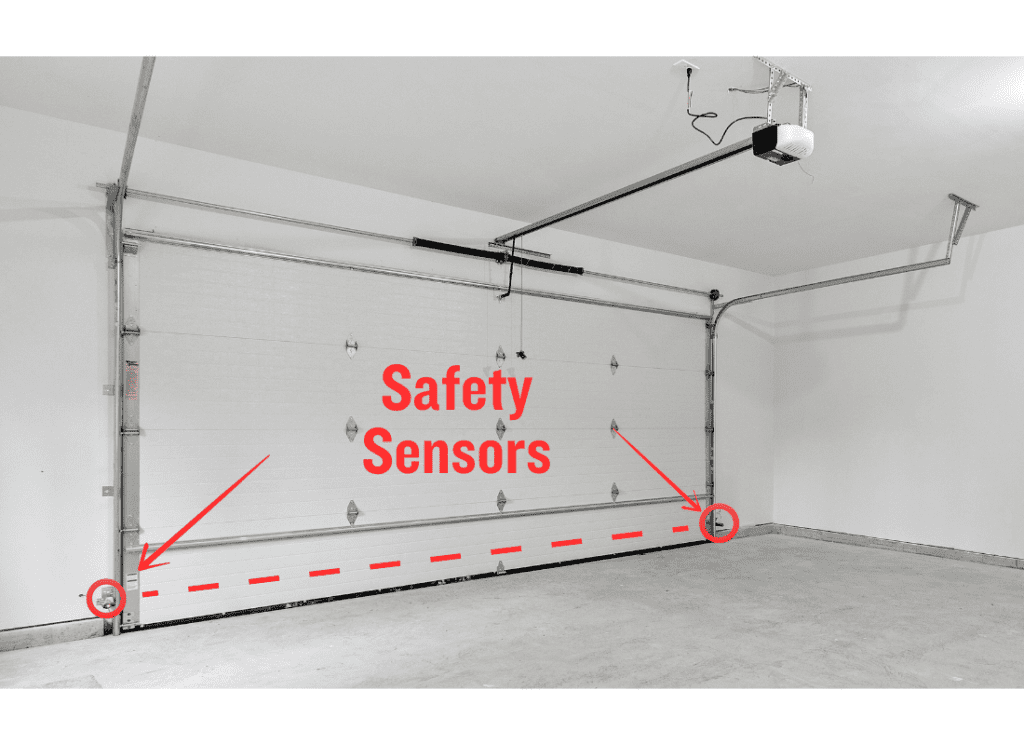
Yet, when an object dares to interrupt this infrared conversation, the garage door opener heeds the call to arms, initiating an accidental reversal to prevent a collision and effectively prevent accidental reversal.
The Impact of Sun Glare on Sensor Function
Now picture the battlefield on sunny days when the sunlight shines directly onto one of these sensors for a few hours. The glare is like a blinding spotlight, disrupting the infrared dialogue between the sensors and leaving the garage door opener confused, often refusing to close the door as it senses an invisible obstacle.
This mischievous interference by the sun can be so convincing that you might find yourself troubleshooting for electrical issues, not realizing that the true culprit is the sun’s glare playing tricks on your sensors.
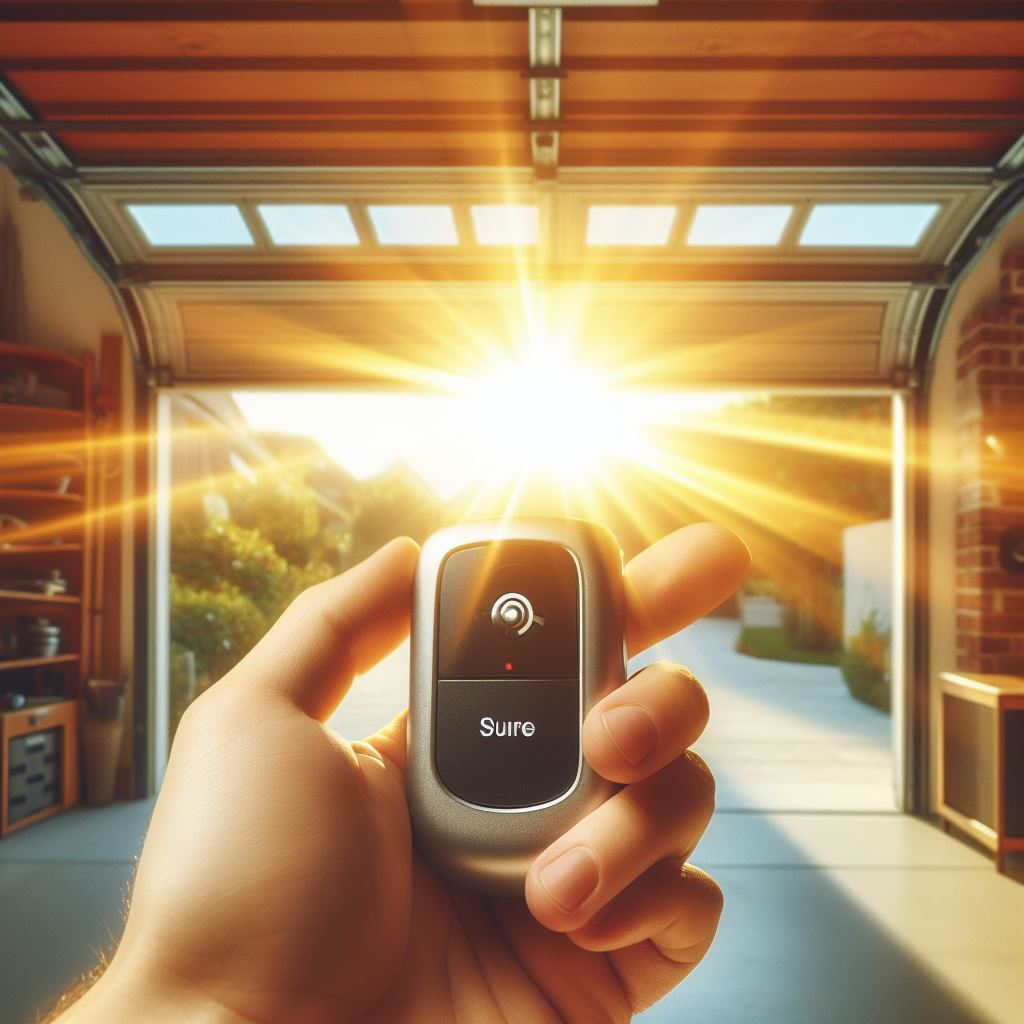
Keep in mind that the sun will only affect the closing of the garage door and not the opening of the garage door. If you are having trouble with the garage door opening then you have another problem and it’s not the fault of the sun.
Top Garage Door Safety Eye Sun Shield Solutions
As you stand there, scratching your head, wondering why your garage door won’t close, the answer dawns on you: sun shields! These simple yet ingenious devices can be the difference between a garage door that’s at the mercy of the sun and one that functions smoothly, come rain or shine.
Whether you’re a hands-on DIY enthusiast or a fan of ready-made solutions, there’s a sun shield strategy out there to meet your needs and ensure your garage sensors stay shadowed and operational.
Swap the Sensors
The first thing you may want to try is swapping the sensors from one side to the other. One sensor is going to be the sender and the other is going to be the receiver. In other words, one sensor is going to be sending the inferred beam while the other will be receiving it. The sunlight is going to affect the receiving sensor.

If you remove the sensors and install them on the opposite sides that they are currently installed then it may just solve the problem without having to any other adjustments or modifications.
If that doesn’t work then you may want to try making or purchasing a sun shield for the sensors.
DIY Toilet Paper Tube Solution
Ever thought that the humble toilet paper tube could save the day? Well, it turns out, this common household castaway can become a knight in cardboard armor for your garage door sensors. By slicing a tube lengthwise and placing it over the sensor, you create a makeshift sun shield that works great in a pinch, serving as an impromptu replacement kit.
And if cutting up cardboard tubes isn’t your style, a small piece of cardboard, taped just right, can cast a shadow over the sensor and foil the sun’s plans without any need for complex tools or instructions.
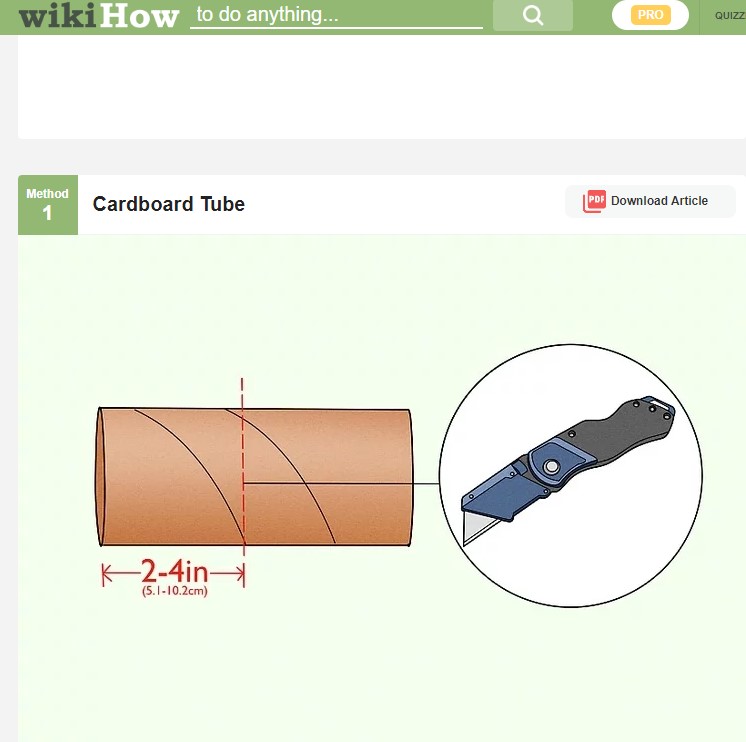
Wikihow.com has a decent illustration of how to make your own sun shields for your garage door opener safety sensors.
Purchase Sun Shields
For those who prefer a more polished approach, commercial sun shields are like sunglasses for your sensors. Designed to fit snugly over your garage door sensors, these shields are the first line of defense against the sun’s rays, ensuring your door functions flawlessly even on the sunniest of days.
Weather-resistant and easy to install, these commercial solutions offer a reliable fix to the problem of sunlight shining directly onto your sensors. With support installation available, the next time you’re browsing your favorite hardware store’s website, consider adding a shield sunlight product to your shopping cart.
Choosing the Right Location
But even the best shield is useless if it’s not in the right spot. When it comes to installing sun shields, the location is everything. You want to position them precisely to cover the electronic eye without blocking its vision, like a hat that shades your eyes without covering your face. To ensure proper placement, don’t hesitate to browse installation guides available online or provided by the manufacturer.
Sometimes, all it takes is a little vertical maneuvering, moving the sensors up or down by a few inches to dodge the direct path of those pesky sun rays.
Adjusting Sensor Angle
But wait, there’s more! If tweaking the location of your sensors doesn’t cut it, why not try adjusting their angle? It’s a strategic move, like angling your car’s visor to block the glare without affecting your view of the road. And here’s a pro tip: position the emitter, which sends out the infrared beam, on the sunny side of the garage. This side is less sensitive to sunlight, reducing the chance of accidental reversals due to sun glare.

Ensuring a Secure Fit
With your sun shield in place, the last thing you want is for it to slip or move, leaving your sensor exposed to the sun once again. Whether you’ve opted for a homebrew solution or a store-bought protector, ensuring a secure fit is crucial. Here are some options to keep your sensors safe and sound, free from the sun’s meddling:
- Use zip ties to secure the sun shield in place.
- Use duct tape to secure the sun shield to your sensor.
- Use old polarized plastic to create a custom fit for your sensor.
And remember, like checking your car’s oil or tire pressure, it pays to periodically inspect your sun shield’s position to keep everything running smoothly.
Last Resort – How to Close Your Garage Door In An Emergency
If you’re in a hurry and don’t have time to troubleshoot the issue, the above solutions didn’t work or you just need to get the door closed then there are two main ways to do this.
Hold The Wall Button
You can hold constant pressure on the wall button and the garage door should close. You will need to hold your finger on the button until the door is entirely closed and touching the floor. If this doesn’t work then there may be other issues besides the safety sensors.
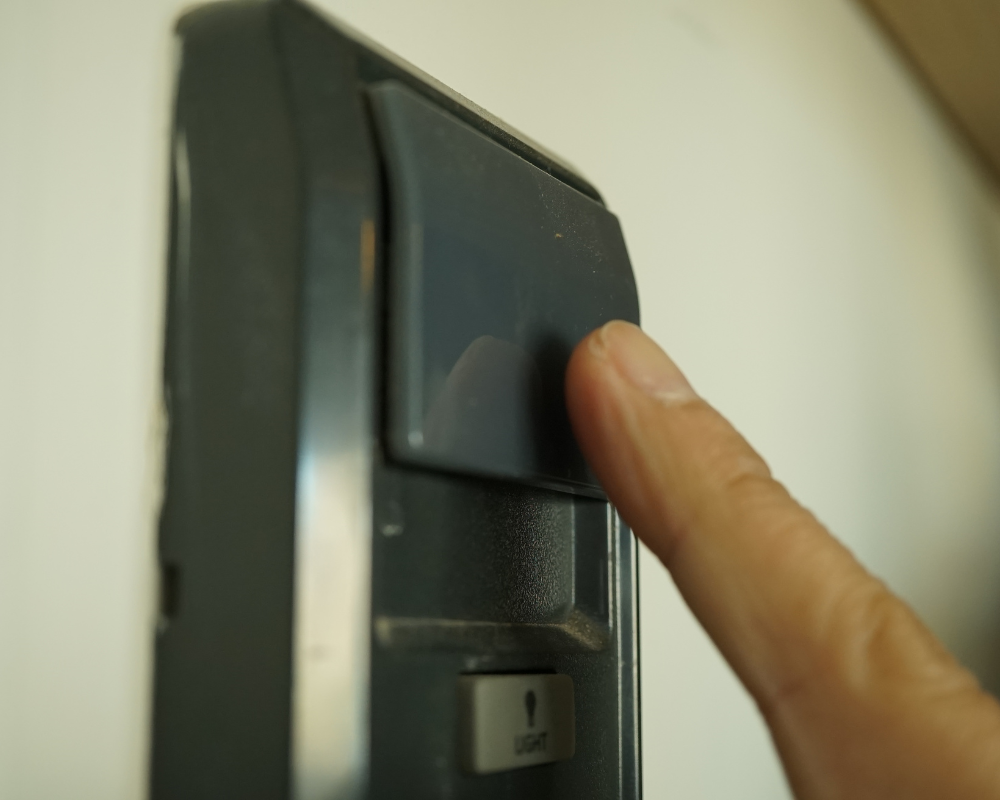
Pull The Emergency Cord
Every garage door opener will have a red emergency cord. Once you pull the emergency cord the door arm will be disengaged from the garage door opener trolley. This will allow you to lower the garage door manually. Be careful as the garage door may be heavy and you may need some assistance closing the garage door. You don’t want to let the garage door slam to the ground or it could cause damage to the door or injury.
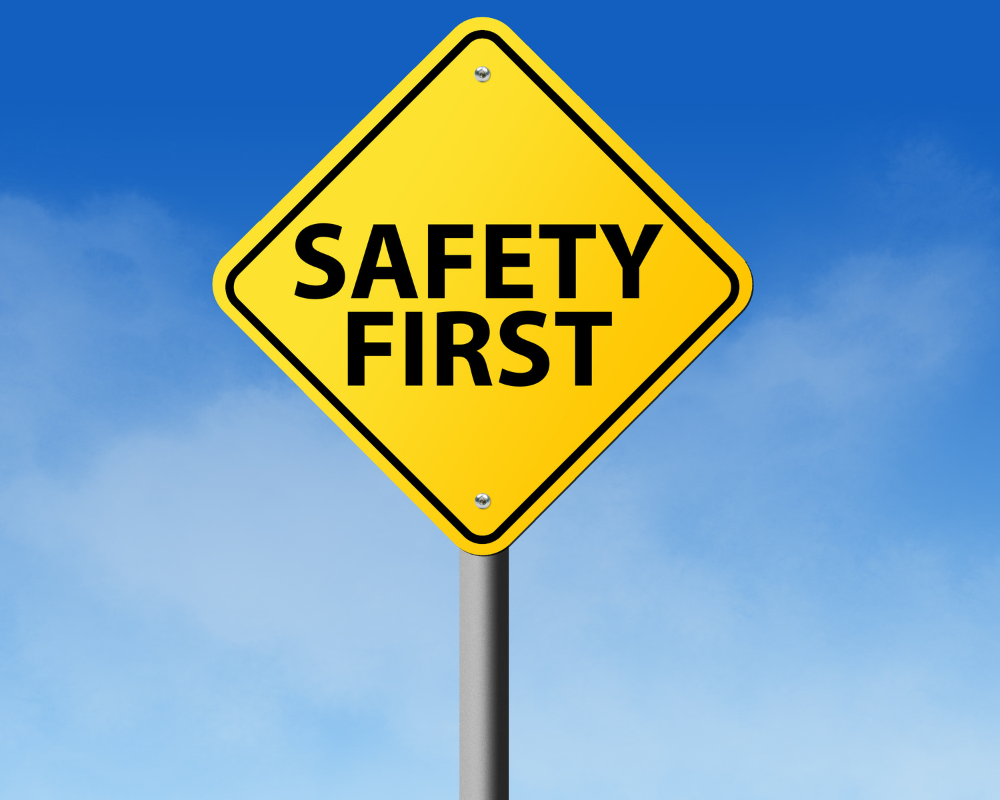

If you don’t feel comfortable working on the garage door then you should call a professional. Garage doors can be dangerous if operated or handled incorrectly due to the many moving parts, weight of the door and tension on the springs. When in doubt, get a professional to look over and service the door and opener.
Troubleshooting Common Garage Door Sensor Issues
Despite our best efforts, sometimes the garage door sensors still act up, leaving us puzzled and frustrated. But before you call in the cavalry, let’s look at some common sensor issues that you might be able to fix yourself.
From misalignment to dirt and even pesky electrical gremlins, there’s often a simple solution to getting your garage door back in line.
Sensor Alignment Problems
Have you ever faced the same problem of a garage door that starts to close but then reverses for no reason? It’s a common problem, and more often than not, it’s due to sensors that have been knocked or bumped out of alignment. With a few twists of a screwdriver on the sensor bracket, you can have those sensors staring into each other’s eyes like long-lost lovers, and your garage door will thank you by closing smoothly on your command.
Dirty or Damaged Sensors
But maybe your sensors are perfectly aligned, and the issue is something simpler: dirt. Just like your eyeglasses, the lens of a garage door sensor needs a clear view to work its magic. A soft microfiber cloth can work wonders, clearing away any grime without scratching the lens.

Unfortunately, if the lens is scratched, you might be looking at replacing the whole sensor – precision is key, and there’s no room for blurry vision here.
Electrical Issues
When all else fails, you might be dealing with a block in the electrical flow, a common problem that can be a real pain to fix. Check the wiring for breaks or damage, and if you’re feeling brave, try bypassing the wiring by connecting the sensors directly to the opener to see if the issue lies within the wires themselves. However, be warned, dealing with electrical issues can be risky business, and sometimes it’s best to leave it to the professionals to solve the matter safely.
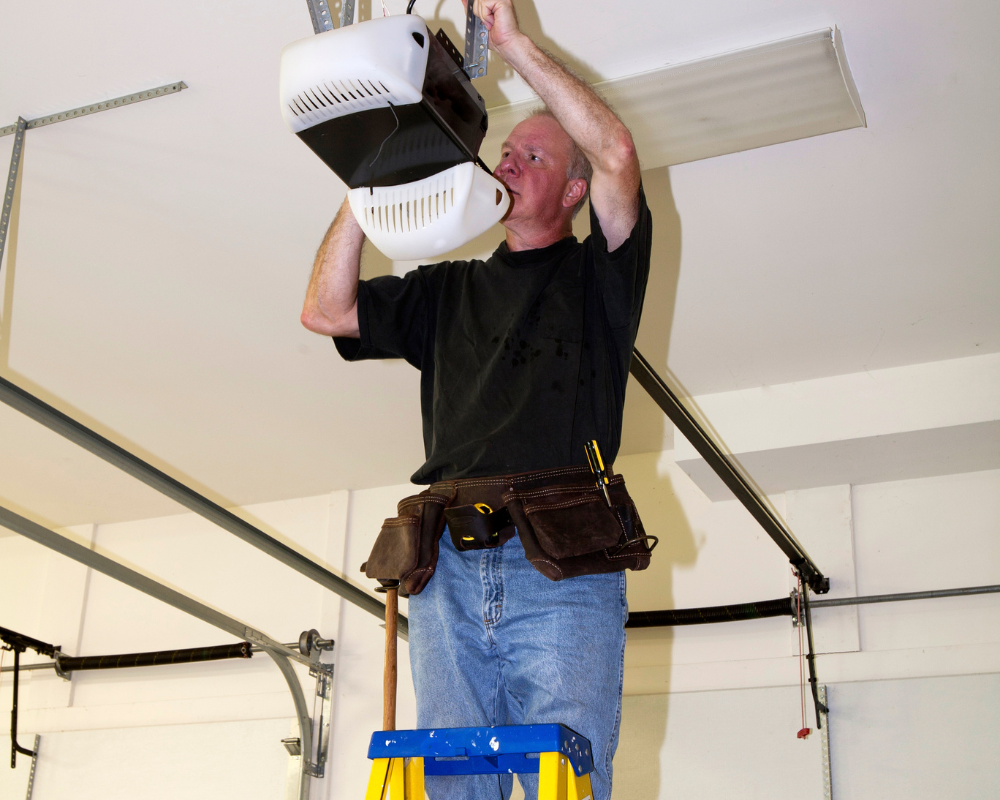
Replacement Sensors
The sun isn’t shining, the sensors are aligned, you’ve cleaned the sensors and checked all of the wiring but the garage door won’t close. Sensors usually have small lights on them which indicate that they have power and that they are aligned. If one of the lights isn’t lit or it’s red (instead of green) then it’s possible the sensors are bad and need to be replaced. Find your opener manual and looks for the parts section in the back of the manual. Here is where you’ll probably find the model number of the replacement sensors.
Summary
After arming yourself with all these tips and tricks, you’re now prepared to defend your garage door sensors against the bright and mighty sun. From DIY hacks to high-tech solutions, you’ve learned that there’s more than one way to shield your garage from the sun’s disruptive influence. Regular maintenance, strategic placement, and a vigilant eye for common issues will keep your garage door operating smoothly, ensuring that not even the sun can throw a wrench in your day.
Frequently Asked Questions
How do I protect my garage door from the sun?
When your garage door won’t close in the sun, you can use small pieces of cardboard around the sensor, avoiding the blockage of the sensor itself. Alternatively, sun shields made specifically for garage door sensors are a more visually appealing option.
How do you bypass the photo eye on a garage door?
Permanently bypassing the sensors is not a good idea, as it would leave your garage door susceptible to injury or death and not up to the UL325 safety code. You can temporarily bypass the sensors by pressing and holding the garage door wall button. This will allow you to close the garage door until you can make a more permanent fix. Just make sure to follow safety precautions.
How do you shade garage door sensors?
You can shade garage door sensors by using small pieces of cardboard, such as a toilet paper tube, around the sensor to block sunlight without obstructing the sensor. Alternatively, you can purchase sensor shields that are specifically made to shade the garage door sensors and sunlight.
What causes garage door sensors to malfunction in sunlight?
Garage door sensors and sunlight don’t mix. You’ll typically encounter this happening in the late fall into the early spring when the sun is lower in the sky. The garage door sensors can malfunction in sunlight because the sun’s infrared rays interfere with the infrared light used by the sensors, disrupting the signal.
What regular maintenance should I perform on my garage door sensors?
Occasionally wipe the lenses of each sensor to keep the dirt off of them. Also try to keep from bumping or knocking the sensors out of alignment. Doing this will also keep the garage door from not closing. If they do get knocked out of alignment then realign the sensors so they are “looking” at each other.
As an Amazon affiliate we earn a commission from purchases through product links.

